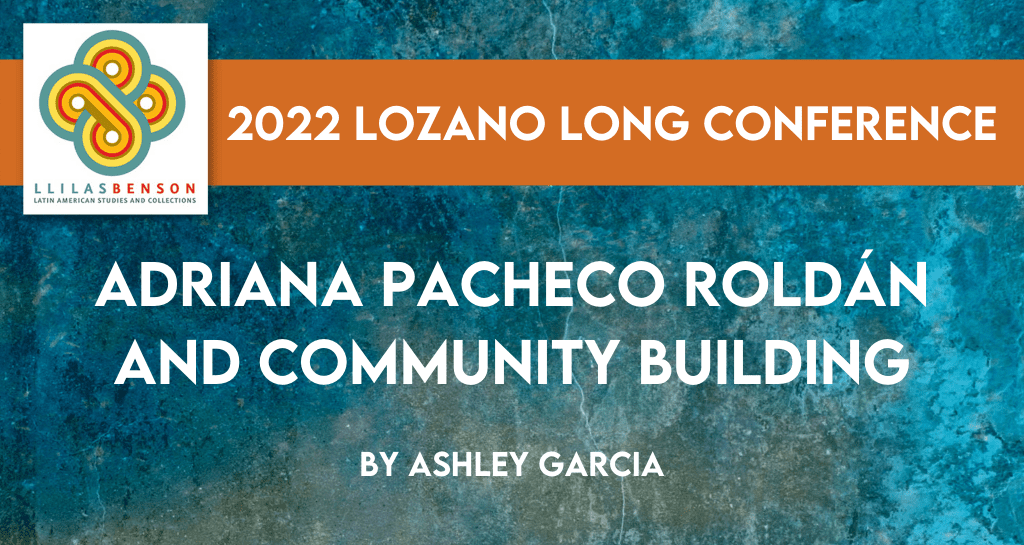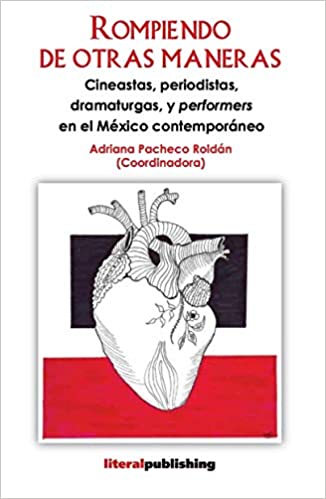Resurrection: An Interview with David Cruz, 2021’s Winner of the Manuel Acuña Poetry Prize and Author of Lazarus – Asymptote Blog
Silvia Plath once wrote, “I have done it again. One year in every ten I manage it—”
This is the opening line of Lady Lazarus, a poem originally included in Plath’s second book, Ariel, published in 1965. Plath, the Bible’s Saint Lazarus, Ovid, David Bowie, Wisława Szymborska, Federico García Lorca, and others sat next to Costa Rican poet David Cruz, or so he claims, as he was writing—and “rigorously editing”—his latest book of poems, Lazarus. This is David’s third book of poems and a follow-up to his 2017 She likes to cry while listening to The Beatles (Valparaíso Ediciones). Earlier this year, Lazarus won the Manuel Acuña Poetry Prize (PIMAPLE in Spanish); previous winners include Antonio Gamoneda, Juan Malibran, and Isabel Conejo.
Lazarus is a retelling of the myth of Saint Lazarus and Plath’s Lady Lazarus. It’s also, says David, “a game of dualities”: past and present, life and death; and an homage to “voices from the past.”
David Cruz is one of Central America’s most exciting poets working today. His poetry is a force of nature. Stunning, picturesque, exquisite. Devastating, earth-shattering, dense. Divine, esoteric, spiritual, mythological, and personal, too. In 2015, more than two hundred critics from universities such as Harvard, Oxford, Columbia, and Princeton chose forty Spanish-speaking poets, born between 1970 and 1985, who, they believed, were “the most relevant” at that moment. They called them El canon abierto—The open canon. The list includes authors such as Andrés Neuman, Urayoán Noel, Raquel Lanseros, and David Cruz. The few glimpses we’ve seen of Lazarus in Vislumbre and available here (PIMAPLE asked David not to share the book just yet) are a testament of such power and “relevance.”
Lazarus I
The mind is a multidimensional map.
Everything we see is but the tip of the iceberg.
I go to the basement of my head
and find many lives,
many memories that I have not lived.
Now I understand Vallejo
“I will die in Paris with the downpour,
on a day I already remember.”
David has published three books of poetry, and in 2011, he won the prestigious Luis Cardoza y Aragón Poetry Prize for his collection Trasatlántico. He’s currently completing a Ph.D. in Hispanic Studies at the University of Washington in Seattle.
José Garcia Escobar (JGE): The last book you put out before Lazarus was She likes to cry while listening to The Beatles in 2017—originally in Spanish, in 2013. What type of literary concerns (or, to put it differently, what “ideas to write about”) did you have then, and what happened to them?
David Cruz (DC): My last book was a personal interpretation of the social, cultural, and technological shifts we experienced between the second half of the twentieth century and the beginning of the twenty-first century. My poetic self in that book gazed at a girl, and I gazed at the world through her. It’s a book nourished by many things such as music (The Beatles, naturally, is the book’s motif), daily news, artists’ ego, politics; I wanted to abridge many ideas under a clear and organic structure. And these are ideas that are still in my head, that remain, and they come to life every time someone reads the book.
TRACK 1
Music is a cavern of sounds
that resists oblivion.
Notes stretched out in bars.
Shallow vaults where the ships run aground.
Clouds in the depths of the universe
that at the point of impact with the rocks, plagiarize
their own interpretation.
JGE: Can you tell me about the origin of Lazarus? What inspired you to start this project? What inspired the book? I know you worked on it for more than five years.
DC: Lazarus is a game of dualities, of contrasts: past and present; life and death; it’s also an homage to voices from the past, and an introspection of my life today. Resurrection threads the book. I address resurrection from various sides, from the religious and eschatological, and each side pokes like an iceberg in between the words. I did work on it for more than five years, but that’s because I get obsessed with making everything tight and until the surpluses have been wrung out of the poem.
JGE: You also said in an interview that the first part of the book is inspired and dedicated to “authors from the past.” Who are some of these authors?
DC: As I said, the book is an homage. In it, I pay tribute to writers and historical figures that amazed me one time. These authors are Corina de Tanagra, Einar Helgason, Yoshida Kenkō, Sor Juana Inés de la Cruz, and Eunice Odio. I based my selection on sentimentality and taste more than history or geography.
JGE: Were these the authors who were by your side when you were writing this book? Did they—and their work—shape Lazarus?
DC: I like to think that all the ghosts from everything I’ve read since I was a kid have sat next to me whenever I sit down to write. They are like a platoon of voices that watch me in silence.
JGE: What are some of the authors you always go back to?
DC: Wisława Szymborska, Federico García Lorca, Blanca Varela, Hans Magnus Enzensberger, Ovid . . . Lists, however, are usually unfair.
JGE: You also mentioned that in Lazarus you included two narrators or protagonists. The first one is based on the myth of Lazarus and is a male character. The second is based on Sylvia Plath’s Lady Lazarus, and it’s a female character. Is your book also about gender fluidity and/or nonbinary people? Or should we think about these characters simply as male and female and not related to each other?
DC: The book does come out of two genders: male and female. But the idea of other genders is there in the book.
JGE: I want to ask you about the myth of Lazarus and Plath’s Lady Lazarus. The differences and similarities are obvious. How did these two stories and texts shape this book? What can we see from the myth of Lazarus and Lady Lazarus in it?
DC: I try to go back to this classic issue, which is resurrection—but I do it in my way. I consider it as a syncretic trip and a very personal one. The book is filled with references to Plath and her work, Ovid’s, even David Bowie’s. If you go back to Shakespeare, you’ll find love; if you go back to El Quijote, you’ll find the utopia of a different world. These themes are continuously being renovated. People write about them all the time, but they do it from a different and new angle. As for Lazarus, I wanted to be as transparent as possible about the influences because, again, it’s an homage. It’s my way of bringing these writers back to life, and as I said before, every time you open a book, it feels like a being with a medium, talking with the author’s spirit, and listening closely to what they wanted to say.
JGE: PIMAPLE’s jury said that Lazarus “permanently questions and challenges language.” What do you think about that? Is this something you did on purpose? How do you “question” language in your poetry?
DC: First, because writers such as María Negroni, María Baranda, and Vicente Undurraga liked my book, that’s an award in itself. Second, I appreciate what they said about how I “question” language. I am a firm believer that art must be created spontaneously and edited rigorously. In the beginning, I’m a little boy playing with language. I squeeze it. I stretch it. And I do this to say what I want to say. But when I’m editing, I’m ruthless. It’s almost like I’m a blacksmith, and I have to put the raw material of a book through the fire to shape it.
Childhood’s last afternoon
My mother calls me.
I don’t want to go.
I’m filthy.
Bombs showered this afternoon
and they shattered the neighborhood.
My mother insists.
I don’t want to talk to her.
I stained my new shirt
and she won’t believe me
if I tell her
that I didn’t ruin it
playing fútbol.
JGE: I want to go back to 2011 when you won the Luis Cardoza y Aragón Prize for Transatlántico. That was the first time your work was acknowledged outside of Costa Rica. Do you remember what that was like? Is it similar to the PIMAPLE?
DC: What matters most with these awards is taking the books to new readers. And as writers, we must pay the bills too, you know? So, today, when countries like ours forget about art and neglect their artists, I can’t help but be thankful. The Luis Cardoza Prize then, and the Manuel Acuña now, are a type of fuel that keeps me going.
Photo credit: María Ramos Pacheco
David Cruz (San José, Costa Rica, 1982). More than 200 critics from 100 universities (Harvard, Oxford, Columbia, and Princeton, among others) chose him as one of the most relevant poets in the Spanish language born after 1970, including him in the anthology El canon abierto (Visor). He has also published three poetry books, was the 2021 Premio Internacional Manuel Acuña winner, the 2011 Premio Luis Cardoza y Aragón winner, and a finalist in the 2020 Montreal International Poetry Prize. He’s currently studying a Ph.D. in Hispanic Studies at the University of Washington Seattle. He also holds an MFA in Creative Writing from the University of Texas at El Paso, where he was also editor of the Rio Grande Review.
José García Escobar is a journalist, fiction writer, translator, and former Fulbright scholar from Guatemala. He got his MFA in creative writing from The New School. His writing has appeared in The Evergreen Review, Guernica, The Washington Post, and The Guardian. He is Asymptote’s editor-at-large for the Central American region.
*TRACK 1 was translated by Natasha Cline. Lazarus I and Childhood’s last afternoon were translated by José García Escobar.




